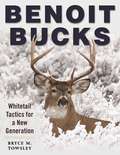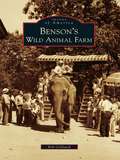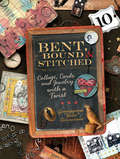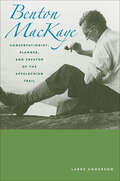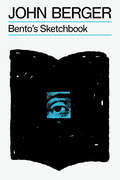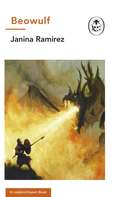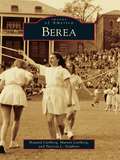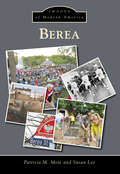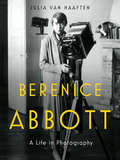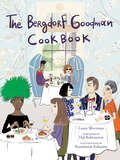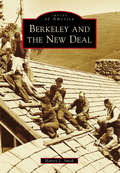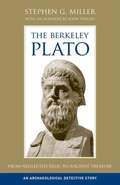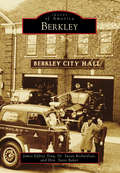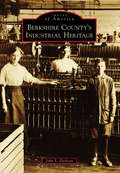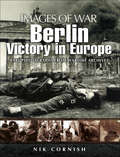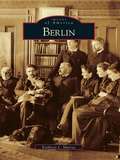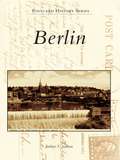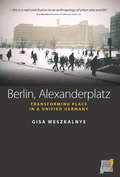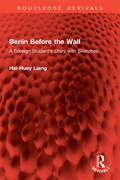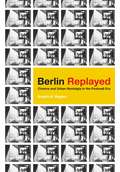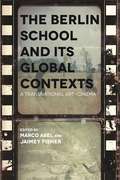- Table View
- List View
Benoit Bucks: Whitetail Tactics for a New Generation
by Bryce M. TowsleyJoin award-winning author Bryce M. Towsley as he picks the brains of three of the most successful white-tailed deer hunters in America today-Larry, Lane, and Shane Benoit. In this comprehensive volume, Towsley hunts for the real reasons behind the Benoits’ unbelievable knack for taking trophy bucks.While most people know the Benoits for their incredible tracking abilities, they are no longer one-dimensional in their hunting techniques. It is true that there may be no better deer hunters in America, but as Shane Benoit is quick to point out, "The whitetail survives because it is so adaptable, and if the whitetail hunter is to continue to survive and be successful, he had better follow their lead by learning to change and adapt too.” Despite fluctuations in climate, the Benoits have been led to do just that. They have been able to combine their extraordinary whitetail knowledge with new details and techniques to continue their successful track record of taking trophy whitetails.In Benoit Bucks, you will learn all the secrets behind how the Benoits have adapted to today’s hunting challenges to become the unbelievably successful, multi-dimensional hunters they are today.
Benson's Wild Animal Farm
by Bob GoldsackBenson's Wild Animal Farm in Hudson, New Hampshire, opened to the public in 1927. Due in part to the evolution of the automobile, the attraction grew in size and attendance to become one of New England's major family destinations. Benson's was a zoo to the public, a work station for many circus animal trainers and performers, and a source of summer employment for generations of local teenagers. The attraction closed in 1987 and a bit of Americana faded away, but its memory remains vivid to many. The property was sold to the state for the development of a highway, which never materialized. In 2009, after years of negotiations, the town purchased the land from the New Hampshire Department of Transportation with plans to develop it into a large park filled with picnic areas, walking paths, and bicycle trails. A Benson's museum is planned for the future.
Bent, Bound And Stitched: Collage, Cards And Jewelry With A Twist
by Tonia Davenport Giuseppina CirincioneBend, Shape and Stitch Your Creative Urges Into Expressive Works of Art!Dig out your craft supplies and dust off that forgotten stack of scrapbook papers. In the pages of Bent, Bound, and Stitched, the author of the wildly popular Collage Lost and Found shows you how to cut, glue and sew your way to dimensional collage works as unique as you are.Whether you're a collage artist ready for new techniques or a paper crafter looking to broaden your skills, reinventing your artwork is easy with complete step-by-step photos and instructions for twenty projects, including cards with decorative sewing-machine stitching, a pendant sporting a photo image on shrink plastic and even a photo stand for displaying your favorite snapshots. You'll learn to:Incorporate found objects into unique jewelry pieces using simple methods even beginners can master.Make the most of your stash of paper and rubber stamps, with fresh techniques to revamp your artwork arsenal without buying a thing.Personalize your work with the help of wire letters and one-of-a-kind shapes.Add interesting texture to paper projects with stencils, stitching and subtle sparkle.Let Bent, Bound and Stitched show you how to put a new twist on your creative expression, starting today.
Benton MacKaye: Conservationist, Planner, and Creator of the Appalachian Trail (Creating the North American Landscape)
by Larry AndersonPlanner and originator of the Appalachian Trail and a cofounder of the Wilderness Society, Benton MacKaye (1879-1975) was a pioneer in linking the concepts of preservation and recreation. Spanning three-quarters of a century, his long and productive career had a major impact on emerging movements in conservation, environmentalism, and regional planning. MacKaye's seminal ideas on outdoor recreation, wilderness protection, land-use planning, community development, and transportation have inspired generations of activists, professionals, and adventurers seeking to strike a harmonious balance between human need and the natural environment.This pathbreaking biography provides the first complete portrait of this significant and unique figure in American environmental, intellectual, and cultural history. Drawing on extensive research, Larry Anderson traces MacKaye's extensive career, examines his many published works, and describes the importance of MacKaye's relationships with such influential figures as Lewis Mumford, Aldo Leopold, and Walter Lippmann. This book will appeal to students, scholars, and professionals in preservation, conservation, recreation, planning, and American studies, as well as general readers interested in these subjects.
Benton Mackaye: Conservationist, Planner, and Creator of the Appalachian Trail (Creating the North American Landscape)
by Larry AndersonThe life of the visionary conservationist who created the Appalachian Trail is chronicled in this &“first-rate biography of a unique American thinker&” (Mark Harvey, Journal of American History). Born in 1879, Wilderness Society cofounder Benton MacKaye was a pioneer in linking the concepts of preservation and recreation. Spanning three-quarters of a century, his career had a major impact on emerging movements in conservation, environmentalism, and regional planning. MacKaye's seminal ideas on outdoor recreation, wilderness protection, land-use planning, community development, and transportation have inspired generations of activists, professionals, and adventurers seeking to strike a harmonious balance between human need and the natural environment. This pathbreaking biography provides the first complete portrait of this significant figure in American environmental, intellectual, and cultural history. Drawing on extensive research, Larry Anderson traces MacKaye's extensive career, examines his many published works, and describes the importance of MacKaye's relationships with such influential figures as Lewis Mumford, Aldo Leopold, and Walter Lippmann.
Bento's Sketchbook
by John BergerA deeply moving exploration of the relationship between thinking and drawing, from the author of the groundbreaking Ways of SeeingThe seventeenth-century philosopher Baruch Spinoza (a.k.a. Bento) spent the most intense years of his short life writing. He also carried with him a sketchbook. After his sudden death, his friends rescued letters, manuscripts, notes—but no drawings.For years, without knowing what its pages might hold, John Berger has imagined finding Bento&’s sketchbook, wanting to see the drawings alongside his surviving words. When one day a friend gave him a beautiful virgin sketchbook, Berger said, &‘This is Bento&’s!&’ and he began to draw, taking inspiration from the philosopher&’s vision.In this beautifully illustrated book, Berger uses the imaginative space opened up in this experiment to explore politics, storytelling, Spinoza&’s life and times, and the process of drawing itself.
Beowulf: A Ladybird Expert Book (The Ladybird Expert Series #26)
by Janina RamirezPart of the ALL-NEW LADYBIRD EXPERT SERIES'This accessible illustrated guide is a great introduction to the story, its origins and its enduring legacy' BBC HISTORY- Which is more terrifying - a monster or its mother? - Why did Berserkers run naked into battle? - How was the story of Beowulf almost lost forever?PLUNGE into the adventures of Beowulf, the 6th Century hero who defeated the monster Grendel, became king of his people, and slayed a tremendous dragon. Surviving in a single, burnt manuscript, Beowulf continues to entrance readers and inspire major works of fantasy today.WARRIORS. MONSTERS. DRAGONS. GOLD.Janina Ramirez's Beowulf is an accessible and authoritative guide to the spellbinding world and daring feats of a poem remembered through the centuries.
Berea (Images of America)
by Marvin Carlberg Howard Carlberg Patricia L. StevensIn 1853, emancipationist Cassius M. Clay gave a portion of his land holdings in central Kentucky to Rev. John G. Fee. Together they had a vision of building a community for all people of the earth, regardless of race, color, creed, gender, or class. Berea College was founded in 1855 with the same principles in mind, becoming the first interracial and coeducational college in the South. By the 1920s, Berea was a popular stopping point for travelers driving the Dixie Highway, highlighted by the Boone Tavern, which opened in 1909. Images of America: Berea takes readers on a pictorial journey of Berea's history, the growth of the college, and the flourishing artisan community with more than 200 images selected from the extensive Berea College Archives, private collections, and other sources.
Berea (Images of Modern America)
by Susan Lee Patricia M. MoteAmong southwest Cleveland suburbs, Berea, a community of 19,000, is unique. Berea was once called "The Sandstone Capital of the World," but the area's quarrying industry ceased in the mid-20th century. Immigrant quarrymen and their descendants remained, adding an eclectic and resilient mix to the academic atmosphere. Where blasting once shook the quarries, a pleasant area of lakes, trails, and picnic spots now delights residents and visitors alike. The historic home of the town's first doctor enjoys new life as a bed-and-breakfast, contemporary architecture integrates a historic church as part of the university, a wind turbine generates power for the fairgrounds, and community gardens offer produce to local food pantries.
Berenice Abbott: A Life In Photography
by Julia Van HaaftenThe comprehensive biography of the iconic twentieth-century American photographer Berenice Abbott, a trailblazing documentary modernist, author, and inventor. Berenice Abbott is to American photography as Georgia O’Keeffe is to painting or Willa Cather to letters. She was a photographer of astounding innovation and artistry, a pioneer in both her personal and professional life. Abbott’s sixty-year career established her not only as a master of American photography, but also as a teacher, writer, archivist, and inventor. Famously reticent in public, Abbott’s fascinating life has long remained a mystery—until now. In Berenice Abbott: A Life in Photography, author, archivist, and curator Julia Van Haaften brings this iconic public figure to life alongside outlandish, familiar characters from artist Man Ray to cybernetics founder Norbert Wiener. A teenage rebel from Ohio, Abbott escaped first to Greenwich Village and then to Paris—photographing, in Sylvia Beach’s words, "everyone who was anyone." As the Roaring Twenties ended, Abbott returned to New York, where she soon fell in love with art critic Elizabeth McCausland, with whom she would spend thirty years. In the 1930s, Abbott began her best-known work, Changing New York, in which she fearlessly documented the city’s metamorphosis. When warned by an older male supervisor that "nice girls" avoid the Bowery—then Manhattan’s skid row—Abbott shot back, "I’m not a nice girl. I’m a photographer…I go anywhere." This bold, feminist attitude would characterize all Abbott’s accomplishments, including imaging techniques she invented in her influential, space race–era science photography and her tenure as The New School’s first photography teacher. With more than ninety stunning photos, this sweeping, cinematic biography secures Berenice Abbott’s place in the histories of photography and modern art, while framing her incredible accomplishments as a female artist and entrepreneur.
Bergdorf Goodman Cookbook
by Bergdorf GoodmanA fully illustrated collection of more than one hundred recipes from Bergdorf Goodman's renowned BG Restaurant, with contributions by fashion industry tastemakersBG Restaurant, located on the seventh floor of Bergdorf Goodman, with its sublime pale-blue and cool green interior and sweeping view of Central Park, is a legendary destination--a ritual part of the shopping experience at this singular luxury emporium for many, a regular gathering spot for members of the fashion community, and a coveted dining experience for visitors to New York City who want to sample its splendid afternoon tea service or addictive Gotham Salad.The Bergdorf Goodman Cookbook publishes for the first time a full range of the restaurant's renowned offerings, from the sparkling Passionista cocktail to the irresistible Lobster Mac and Cheese to The BG, its luscious signature chocolate-hazelnut dessert. Accompanying these perennial favorites from the BG menu and seasonal specialties are recipes contributed by fashion insiders. Designers, editors, writers, stylists, and Bergdorf Goodman's own Linda Fargo and Betty Halbreich all share personally beloved dishes. With a foreword by Hal Rubenstein and illustrations by Konstantin Kakanias, The Bergdorf Goodman Cookbook is a carefully curated and charmingly presented collection of recipes that will delight both discerning fashion and food lovers alike.40 full-color illustrations throughout
Berkeley and the New Deal
by Harvey L. SmithBerkeley's 1930s and early 1940s New Deal structures and projects left a lasting legacy of utilitarian and beautiful infrastructure. These public buildings, schools, parks, and artworks helped shape the city and thus the lives of its residents; it is hard to imagine Berkeley without them. The artists and architects of these projects mention several themes: working for the community, responsibility, the importance of government support, collaboration, and creating a cultural renaissance. These New Deal projects, however, can be called "hidden history" because their legacies have been mostly ignored and forgotten. Comprehending the impact of the New Deal on one American city is only possible when viewed as a whole. Berkeley might have gotten a little more or a little less New Deal funding than other towns, but this time it wasn't "Bezerkeley" but very much typical and mainstream. More than history, this book shows the period's relevance to today's social, political, and economic realities. The times may again call for comprehensive public policy that reaches Main Street.
The Berkeley Plato: An Archaeological Detective Story
by Stephen G. MillerThis book explores the provenance of the so-called Berkeley Herm of Plato, a sculptural portrait that Stephen G. Miller first encountered over thirty years ago in a university storage basement.
Berkeley Township
by Alfred T. StokleyIncorporated in 1875, Berkeley Township was settled along the Barnegat Bay shoreline, dotted with homesteads and fishermen's shanties. The Central Railroad first brought summer tourists to the area for recreation in the late 19th century, and in the years to follow, many new attractions were established, including B.W. Sangor's lavish Royal Pines Hotel. Edward Crabbe established the village of Double Trouble in 1903 for lumber and cranberry production, and Sutton's Pavilion became Bayville's first fishing camp in 1905. Also in this era, George C. Crossly mined clay for terra-cotta products, using a narrow-gauge spur of the Pennsylvania Railroad. In 1928, Rudy Korman opened his restaurant and picnic grove, soon known as Korman's Corner. By the 1930s, Clover Cream Top Dairy was the largest in Bayville. In 1932, Dino the Dinosaur was built for a Sinclair Service Station and became a landmark. Historic Route 9 was used heavily through the middle of the 20th century, featuring roadside stands and tourist cabins. Berkeley Township showcases these landmarks and the rich recreational and commercial history of this Ocean County community.
Berkley (Images of America)
by James Jeffrey Tong Dr Susan Richardson Hon. Steve BakerOnce a forbidding area of swamps and forests, Berkley was uninhabited until the early 19th century. In 1924, the Detroit News disparaged the "frontier community" and wrote that it "resembles a settlement in the oil waste of Wyoming." Still, forward-thinking residents thought Berkley had a bright future. Two factions with competing ideas raced with paperwork to the Oakland County Courthouse in Pontiac; the triumphant group, desiring a small town, camped out overnight to be the first in line. Later incorporated as a city in 1932, Berkley's history includes the invention of the Benjamin Grain Cradle, the Ku Klux Klan parading through its streets, and the devastation of the fledgling community during the Great Depression. Through it all, Berkley continues to thrive and prides itself on being the "City That Cares."
Berkshire County's Industrial Heritage (Images of America)
by John S. DicksonEvidence of bygone industrial prowess is scattered across Berkshire County in the far west of Massachusetts. Better known now for its four-season tourist attractions like beautiful scenery, cultural venues, and outdoor sports, the region was once home to an industrial base that helped a growing nation meet its needs in textiles, paper, glass, iron, and a variety of other products. The relics—imposing brick buildings just off the main roads—tell a story of enterprising young men and women harnessing the power of the area’s rushing streams to make products and profits. They were inventors and adopters of technology, and they gave back to their communities. Recurring waves of immigrants flowed into the county to take their places at the machinery and try to make a living for their families.
Berlin (Images of America)
by Berlin History Foundation, Inc. Susan TaylorThe town of Berlin on Maryland's Eastern Shore was founded on a 300acre tract of land called Burley, part of a land grant to Col. William Stevens that was surveyed in 1677. The town developed on the crossroads of the Sinepuxent Road, going east toward the Atlantic coast and the Philadelphia Post Road, and derived its name from the contraction of Burley Inn, a roadside inn at this popular crossroads. One of Berlin's famous locals was United States naval hero Stephen Decatur, who was born on farm property within the surrounding area in 1779. Today Berlin's Main Street is listed on the National Register of Historic Places, and the town has received national attention by having been featured in both Paramount Pictures' Runaway Bride (1999) and Disney's Tuck Everlasting (2002) films.
Berlin: Victory in Europe (Images of War)
by Nik CornishIn April and May 1945 the city of Berlin was the site of the final destructive act of the Second World War in Europe. The German capital became a battleground. After three weeks of ruthless fighting against a desperate, sometimes suicidal, defense, the Red Army took the city and crushed the last remaining German armies in the East. This momentous battle and the elaborate preparations for it were recorded in graphic detail by photographers whose images have come down to us today. These images, which give us an unforgettable glimpse into the grim reality of mid-twentieth-century warfare, are the raw material of Nik Cornishs evocative book.Using a rich selection of rare photographs from the Russian archives as well as images from German sources, most of which have not been published before, he traces the course of the entire campaign. The battles fought in East Prussia, eastern Germany and Hungary in particular the assault on Budapest are covered. But the body of his book is devoted to the battle for Berlin itself—the monstrous onslaught launched by Zhukovs armies on the Seelow Heights, the bitter street fighting through the suburbs, then the ultimate confrontation, the merciless room-by-room struggle for the center of the city and the Reichstag.
Berlin
by Kathleen L. MurrayLocated in the geographical center of the state, Berlin is best known as the Home of the Yankee Peddler. The first white settler, John Beckley, arrived in 1650, followed by a few families from Farmington in the late 1600s. Initially, Berlin was both a religious and an agrarian community. Farming was the way of life when the first church was built in 1712 in the Great Swamp Settlement of Berlin. As the settlement grew, small industries arose, mills sprang up along the rivers and streams, tinsmith shops opened, and the Yankee peddler wagon became a traveling store. Gradually over the years, the industries expanded and the farms diminished.Berlin focuses on the townspeople-the doctors and merchants, artists and artisans, poets and painters. The town has three population centers: East Berlin is separated from Kensington and Berlin by a highway and a line of hills, and each of these sections has retained its villagelike atmosphere. The book highlights the diversity of Berlin's religious community and the spirit of ecumenicalism that spread throughout its neighborhoods. Individuals who appear include the Leatherman, a gentle person who traveled through Berlin in ages past, and the Goat Man, the personification of the kind neighbor. Dr. Willard Wallace said it very well, "Berlin is just Berlin . . . people of many different religious and ethnic backgrounds who live successfully together."
Berlin (Postcard History Series)
by Jacklyn T. NadeauBerlin, first settled in 1822 by William Sessions of Gilead, Maine, began as Maynesborough and was incorporated as the town of Berlin in 1829. The invention of the water turbine allowed early residents to harness the immense power of the Androscoggin River, which bisects the town. The arrival of the railroad in 1852 aided the transport of timber and later paper products, helping to give Berlin the nickname "the City that Trees Built." Incorporated as a city in 1897, what began as a small town grew until it was, for a time, the world's largest manufacturer of paper products.
Berlin, Alexanderplatz: Transforming Place in a Unified Germany (Space and Place #1)
by Gisa WeszkalnysA benchmark study in the changing field of urban anthropology, Berlin, Alexanderplatz is an ethnographic examination of the rapid transformation of the unified Berlin. Through a captivating account of the controversy around this symbolic public square in East Berlin, the book raises acute questions about expertise, citizenship, government and belonging. Based on ethnographic fieldwork in the city administration bureaus, developers' offices, citizen groups and in Alexanderplatz itself, the author advances a richly innovative analysis of the multiplicity of place. She reveals how Alexanderplatz is assembled through the encounters between planners, citizen activists, social workers, artists and ordinary Berliners, in processes of popular participation and personal narratives, in plans, timetables, documents and files, and in the distribution of pipes, tram tracks and street lights. Alexanderplatz emerges as a socialist spatial exemplar, a 'future' under construction, an object of grievance, and a vision of robust public space. This book is both a critical contribution to the anthropology of contemporary modernity and a radical intervention in current cross-disciplinary debates on the city.
Berlin Before the Wall: A Foreign Student's Diary with Sketches (Routledge Revivals)
by Hsi-Huey LiangIn the 1950’s, Berlin had come under four-power occupation while still struggling to recover from the war. It had also become the object of a fierce ideological conflict between Stalinist Communism and capitalist democracy, between traditional German values and hopes for a new and better Europe. From these years, when the inhabitants of Germany’s Old Reich capital re-evaluated their past and tried to set their hopes for the future, comes the diary of an expatriate Chinese student, himself in search of a new spiritual homeland and as anxious to learn from the victors as from the vanquished.First published in 1990, Berlin Before the Wall is an account of life in Berlin recorded in the form of a diary and sketchbook kept by Hsi-Huey Liang, a young graduate student, while researching his dissertation in 1954. Capturing a pivotal moment of the Cold War, Liang provides a wealth of detail about a city that has been the subject of enduring fascination. As a historical document, the diary records the political events of the time with an engaging style and compelling immediacy. As a sketchbook, it captures the rhythms of the city, with its witty pencil drawings of people, places, and events. Liang’s pencil moves with ease and intelligence from street cleaners to diplomats, and his drawings exhibit not only an extraordinary sensitivity but are also astonishing in their sheer variety and keen insight into the culture of Berlin.This book will be a fascinating read for anyone interested in the Cold War period, student life, and all things German.
Berlin Replayed: Cinema and Urban Nostalgia in the Postwall Era
by Brigitta B. WagnerScarred by the Second World War, divided during the Cold War, and turned into a massive construction site in the early postwall years, Berlin has dramatically reinvented itself in the new millennium. Film has served a neglected but important function in this transformation.In Berlin Replayed, Brigitta B. Wagner shows how old and new films set in Berlin created a collective urban nostalgia for the city&’s best, most inclusive, and most conciliatory pasts in the face of its renewed purpose as the all-German capital. Exploring films such as Walter Ruttmann&’s Berlin: Symphony of a Great City, Wim Wenders&’s Wings of Desire, Tom Tykwer&’s Run Lola Run, and Wolfgang Becker&’s Good Bye, Lenin!, the book establishes that these films don&’t merely feature the city but actively construct how viewers come to know different Berlins of the past and present. To illustrate how film has repeatedly remade the image of the city, Berlin Replayed focuses on four key periods: the golden 1920s, when the city was a major filmmaking center; the prewall 1950s, when Berlin had two ideologically opposed film industries; the politically transformative late 1980s and early 1990s; and the hyped start of the twenty-first century.By showing how films have helped revive memories of the &“good&” Berlin and, by extension, the &“good&” Germany, Berlin Replayed reveals the underappreciated but powerful role film has played in the process of unifying Germany&’s historical experience and bridging its physical and political divisions.
The Berlin School and Its Global Contexts: A Transnational Art Cinema (Contemporary Approaches to Film and Media Series)
by Jaimey Fisher Marco Abel Lisa Haegele Robert Dassanowsky William Fech Alice Bardan Ira Jaffe Inga Pollmann Roger Cook Michael Sicinski Lutz Koepnick Chris Homewood Brad Prager Gerd Gemünden Roland Végso Hester BaerThe Berlin School and Its Global Contexts: A Transnational Art-Cinema came about in light of the Museum of Modern Art (MOMA)’s 2013 major exhibition of works by contemporary German directors associated with the so-called Berlin School, perhaps Germany’s most important contemporary filmmaking movement. Christoph Hochhäusler, the movement’s keenest spokesperson, stated that "the Berlin School, despite what the label suggests, is not a specifically German phenomenon. All over the world there are filmmakers exploring related terrain." In response to this "transnational turn," editors Marco Abel and Jaimey Fisher have assembled a group of scholars who examine global trends and works associated with the Berlin School. The goal of the collection is to understand the Berlin School as a fundamental part of the series of new wave films around the globe, especially those from the traditional margins of world cinema. For example, Michael Sicinski and Lutz Koepnick explore the relation of the Berlin School to cinema of Southeast Asia, including Apichatpong Weerasethakul and Tsai Ming-liang; Ira Jaffe and Roger Cook take a look at Middle Eastern film, with Nuri Bilge Ceylan and Abbas Kiarostami, respectively. The volume, however, also includes essays engaging with North American filmmakers like Kelly Reichardt and Derek Cianfrance as well as European auteurs like Antonioni, Tarr, Porumboiu, McQueen, and the Dardennes. Bringing German cinema into dialogue with this series of global cinemas emphasizes how the Berlin School manifests—whether aesthetically or thematically, politically or historically—a balancing of national particularity with global flows of various sorts. Abel and Fisher posit that since the vast majority of the films are available with English subtitles (and at times also in other languages) and recent publications on the subject have established critical momentum, this exciting filmmaking movement will continue to branch out into new directions and include new voices. The Berlin School and Its Global Contexts folds German-language cinema back into conversations with international as well as transnational cinema. This volume will be of great interest to scholars of German and global cinema.
Berliners
by Vesper StamperA riveting story about the rivalry between two brothers living on opposite sides of the Berlin wall during its construction in the 1960s, and how their complicated legacy and dreams of greatness will determine their ultimate fate.A city divided. A family fractured. Two brothers caught between past and present.Berlin, 1961. Rudi Möser-Fleischmann is an aspiring photographer with dreams of greatness, but he can't hold a candle to his talented, charismatic twin brother Peter, an ambitious actor. With the sudden divorce of their parents, the brothers find themselves living in different sectors of a divided Berlin; the postwar partition strangely mirroring their broken family. But one night, as the city sleeps, the Berlin Wall is hurriedly built, dividing society further, and Rudi and Peter are forced to choose between playing by the rules and taking their dreams underground. That is, until the truth about their family history and the growing cracks in their relationship threaten to split them apart for good. From National Book Award-nominated, critically acclaimed author-illustrator Vesper Stamper comes a stark look at how resentment and denial can strain the bonds of brotherhood to the breaking point.
